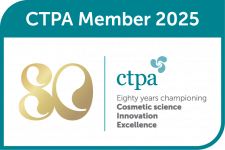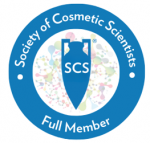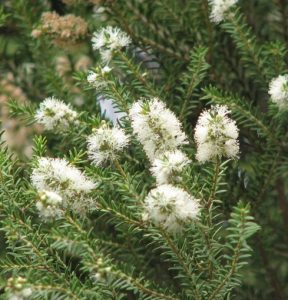Tea tree oil (TTO) – INCI name: Melaleuca Alternifolia Leaf Oil – is a well-known essential oil with a distinctive aroma and widely used in cosmetics and aromatherapy.
It is at risk of being banned in the EU for use in cosmetics, and I wanted to understand why, considering tea tree oil (and related ingredients) has been used in a variety of products and industries for many decades.
Background – Process to Classify a Chemical
There are a few parts to this story related to how the EU works, and how an ingredient’s hazard classification is decided. I have tried to simplify it here (skip this is you don’t want to delve into the details!):
The Classification, Labelling, and Packaging (CLP) Regulation governs how chemicals are classified for hazards. ECHA (European Chemicals Agency) implements the CLP Regulation.
The Committee for Risk Assessment (RAC) is an independent scientific committee established by ECHA. It evaluates the hazardous properties of chemicals and provides opinions on their classification and labelling. RAC’s assessments are based on scientific evidence and contribute to the harmonised classification of chemicals within the EU.
A harmonised classification has been agreed upon and adopted at the European Union level. This classification is binding across all EU member states and ensures consistency in how hazards are communicated and managed. A non-harmonised classification is one that has not been agreed upon at the EU level and may vary between different member states or regions (and even between different suppliers).
What is the Proposed Harmonised Classification for TTO?
For TTO, the RAC were asked to determine its harmonised classification (HC). The reviewed multiple data packages and determined the following proposed HC:
Flam. Liq. 3
Acute Tox. 4
Acute Tox. 4
STOT SE 3
Asp. Tox. 1
Skin Irrit. 2
Skin Sens. 1B
Repr. 1B
Aquatic Acute 1
Aquatic Chronic 2
This was based on the data provided by the Submitter and any other data the RAC could find. It is being reviewed because TTO is used in plant protection as a biocide.
The key classification for the potential ban is Repr. 1B – i.e. Reproductive toxin category 1B. Category 1A is the worst, followed by 1B then 2.
As soon as an ingredient has a harmonised Repr. 1 classification, it automatically gets banned for use in cosmetic products UNLESS companies / groups / organisations apply to defend the ingredient and get an exemption e.g. if there isn’t an alternative that could be used.
How was Repr 1B Chosen?
The data that caused the Repr 1B classification was based on 4 animal studies using TTO. Clear effects on male fertility were observed (decreased sperm count and mobility) and there were changes in implantation which affected litter sizes which may also indicate female fertility issues. There is a suggestion that the toxicity is due to one particular component of TTO, called p-cymene, which is in TTO at about 5%.
The animal studies were reported in 2011, 2012, 2017 and 2018. There was some discussion and disagreement on how much of these studies were relevant to human exposure. However there was no human data submitted to argue for this point.
For cosmetic assessment, because animal testing was fully banned in 2013, the studies in 2017 and 2018 should (strictly speaking) not be considered. This leads to a very strange situation where an ingredient is found to be hazardous in certain studies but should be ignored, but in this case the earlier studies also found the same types of changes.
In a safety assessment, the safety assessor takes into account the dose that brought about the reproductive changes, and this can be used to find a safe level. However, once a hazard classification is harmonised, the Regulations specify that the ingredient will be banned and a risk assessment cannot be used to support its use in cosmetic products (unless an exemption is granted).
What Happens Next?
If the RAC’s proposal is confirmed, the change will be published as an ATP (Adaptation to Technical and Scientific Progress). Melaleuca Alternifolia Leaf Oil will be added to Annex II of the Cosmetic Regulation for Prohibited Substances in the EU and the information will get confirmed in a legislative regulation called the CMR Omnibus. Once the CMR Omnibus takes effect, there is usually a transition period when existing products contains TTO can still be sold, but a shorter deadline for any new products to be launched. This whole process can take up to 2 years.
If the EU implements this ban, it can be expected that the UK will follow suit.
For now, TTO can be used, and I would still accept it for use in the EU and UK.
What Else is There to Know about Tea Tree Oil?
It is a well-studied essential oil and has lots of data available (which is quite unusual for essential oils). It is reported to be a skin and eye irritant above 5% and it is likely to be a skin sensitiser – probably caused by breakdown products generated through oxidation. Colipa (European trade association for cosmetic and personal care industry) recommended a maximum of 1% many years ago. Since then, SCCS have recommended limits of 0.4% in leave-on products and 2% in rinse-off products.
IFRA say that TTO can contain 0.05% methyl eugenol (ME). ME is highly restricted in cosmetic products but the EU limits are tighter except for baby products and ano-genital products (categories 5D and 8: max 0.138%).
Safety Assessor Qualifications
MSc (Distinction), University of Strathclyde
BSc (Hons) Chemistry, University of Nottingham
Certificate - Safety Assessment of Cosmetics in the EU, Vrije University Brussels
Get in Touch
If you would like to discuss any of your products or ranges, please fill out our contact form





